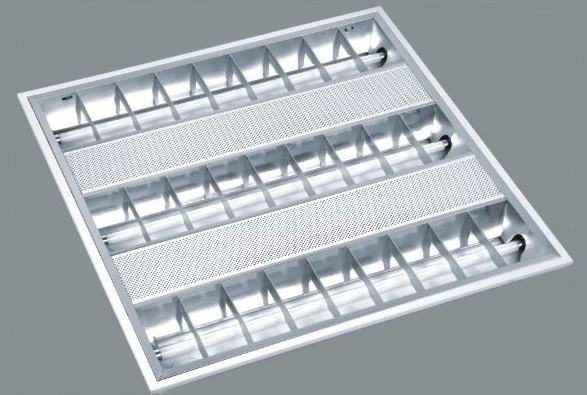On January 1, 2006, the EU has completely banned the use of antibiotic additives in animal feed, and other countries are also increasing restrictions on the addition of antibiotics to feed. With the increasing insecurity of antibiotics being recognized and understood, the search for safe and efficient alternatives to antibiotics has become a major trend in the development of aquaculture.
The microecological preparation has no toxic side effects, no drug resistance and no residue. It is a kind of external additive that can promote the health of the body by improving the intestinal micro-ecological balance, and is not only beneficial for reducing the emission of harmful gases and other harmful substances in pig manure. And it plays an important role in protecting the ecological environment and maintaining ecological balance. It has been widely used in animal breeding and will become the most potential alternative to “antibioticsâ€.
1 Overview of microecological preparations
Microecological preparations can be directly fed to animals and play a beneficial role in the digestive tract of animals. Based on animal micro-ecological balance theory, microecological disorders theory, micro-ecological nutrition theory and micro-ecological control theory, the use of normal microbial components and their metabolites in animals Or a growth promoter, a biological preparation or a live bacterial preparation prepared by a special processing technique such as cultivation, fermentation, drying, and processing. Earlier known as probiotics and somatotropin, also known as microecological preparations in the United States, it was named DFMs (direct feeding microorganisms) in the United States, and the European Commission named it microbial preparations.
There are many varieties of microecological preparations, mainly including Bacillus, Lactobacillus, Bifidobacterium, Bacteroides, Yeast, and Photosynthetic Bacteria. According to the action, it can be divided into two types: feeding type mainly for animal body and environment improving type mainly for in vitro environment. There are certain differences in the use of strains, but there are overlaps, usually lactic acid bacteria, yeasts, etc. It is mainly used as a feeding microecological preparation; Rhodopseudomonas pallidum is mainly used as an environmentally improved microecological preparation; and Bacillus is used both as a feeding type and as an environmentally improved type. In actual production, microecological preparations can be further divided into single bacterial preparations and composite bacterial preparations, and most of the commercially available composite preparations are only the types and quantities of the bacteria.
2 Mechanism of action of microecological preparations
Microecological preparations enter the body mainly through the formation of some substances and changes in the intestinal microflora. The mechanism of action is quite complicated, and the theoretical research progress is still relatively slow. At present, the research on its mechanism of action is mainly It is based on the “micro-ecological balance theory†and mainly includes the following aspects.
2.1 Dominant flora theory
The normal microbiota plays a decisive role in the whole intestinal flora. Within the micro-ecological system composed of normal micro-organisms and livestock and organisms, a few dominant populations play a decisive role in the entire population. Once the dominant population is lost, it will cause micro Ecological disorders, the use of micro-ecological preparations can supplement or restore dominant populations, so that the dysfunctional micro-ecology reaches a new balance. Under normal circumstances, there are a large number of microbial flora in the intestine of animals. Among them, the beneficial bacteria that can effectively promote animal growth and feed digestion are mainly composed of obligate anaerobic bacteria such as bacilli, fungi, digestive cocci, anaerobic bacillus, and lactobacilli. And bifidobacteria.
2.2 Biological Oxygen Free Theory
The dominant microbial population in the intestines of livestock and poultry is anaerobic bacteria. When some beneficial aerobic probiotics (such as Bacillus) enter the intestine, they consume oxygen in the environment during the growth and reproduction process, resulting in an anaerobic environment. The growth of anaerobic bacteria, while the aerobic and facultative anaerobic bacteria decline, so that the balance of the imbalanced flora is adjusted to the normal state, in order to achieve the purpose of preventing disease and treating disease and promoting growth.
2.3 Biopterin
Also known as the biological barrier theory, also known as chimerism. The normal microflora is colonized in the mucous membrane or cell epithelium in an orderly manner, and the harmful bacteria can only exert toxic effects on the body by colonizing certain sites of the mucosal epithelium. These microorganisms can competitively inhibit the adhesion of pathogenic microorganisms to the intestine. Mucosal epithelial cells compete with pathogenic microorganisms for nutrients and ecological sites, thus preventing the growth and reproduction of pathogenic microorganisms to a certain extent.
Provide valuable added down lighting to critical work areas using lighting reflectors, reflector kits, and conversion kits. These reflectors and kits offer cost-effective, state-of-the-art options for retrofits, conversions and upgrades of outdated lighting. Upgrade existing fixtures with Linear LED lamp product. All kits include installation hardware and diagrammatic instructions. T8 fluorescent grille lamp steel back side, Mirror Aluminum Reflector. 4*18w 2*36w 3*36w,2x18w. T8 fluorescent grille lamp. Steel back side, mirro Aluminum Reflector. Have 4*18w 2*36w 3*36w,2x18w. Steel back side, mirro aluminum reflector. Have 4*18w 2x18w 2*36w 3*36w

Grille Lamp Louver Fitting,Surface Reflector Louver Fitting,Recessed Louver Lighting,Louver Fitting
Changzhou Kema Reflector Material Co., Ltd. , http://www.aluminumreflector.com
